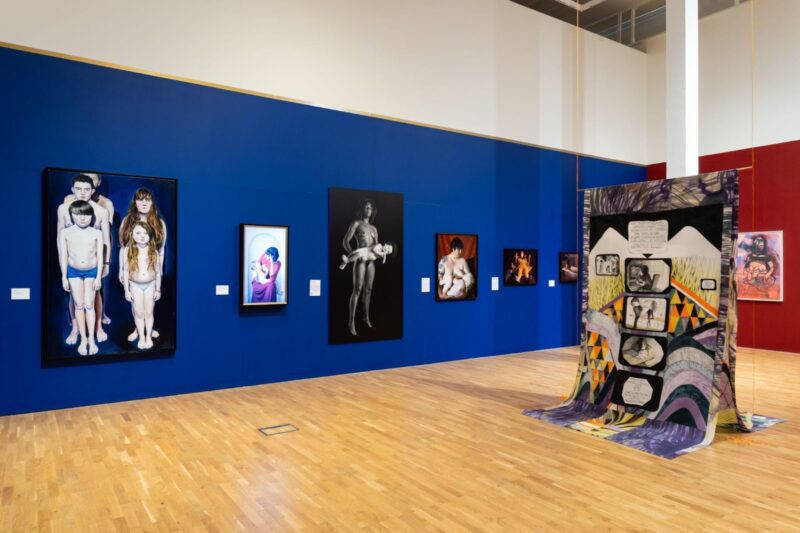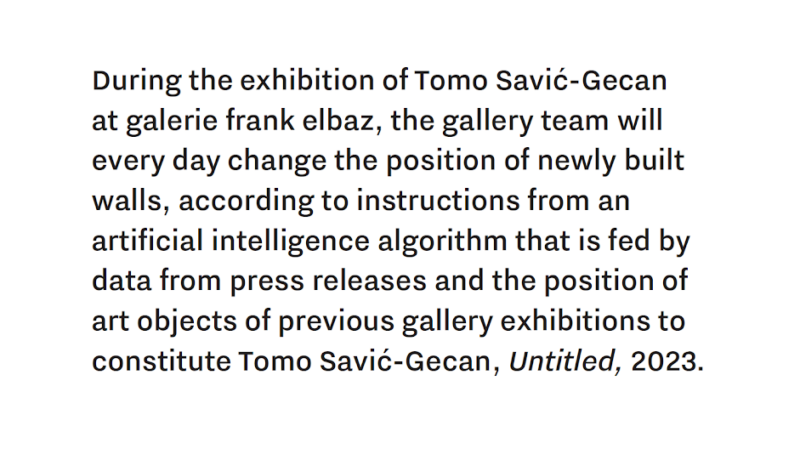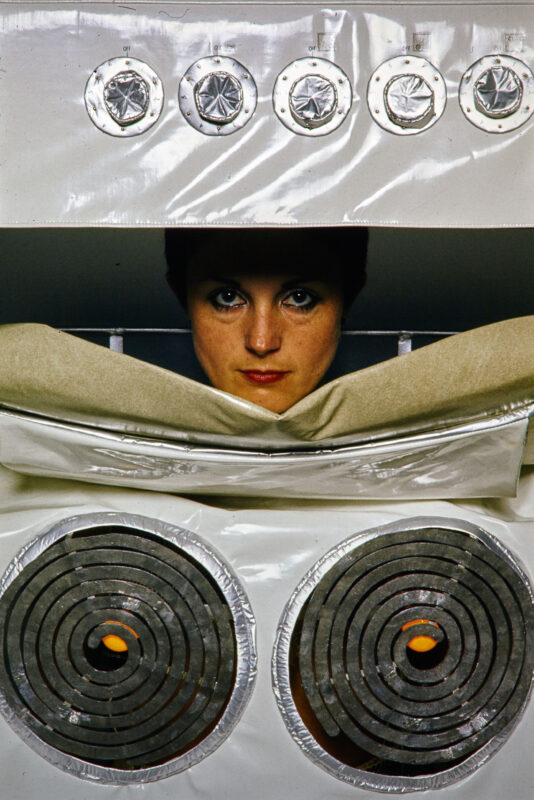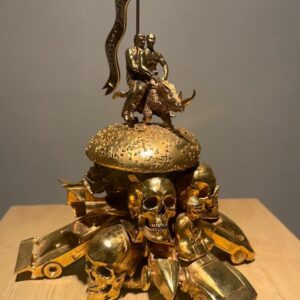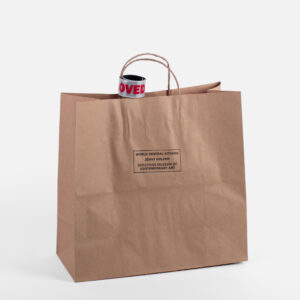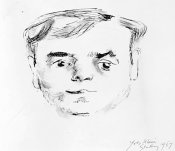
Image:N.H.Stubbing: portrait of Yves Klein, 1957
Yvonne Hagen, Tina Keane, Susan Hiller, Iris Clert, N.H. Stubbing, Ralph Rumney and Yves Klein
Talking of Yves examines some of the interconnected circles that evolved around the art critic Yvonne Hagen, beginning in Paris in the late 1950s. These intersections of social and artistic networks are mapped by their convergence around her friendships with the artist Yves Klein and the Parisian gallery director, Iris Clert.
Yvonne Hagen (1918–2005), born in France to American parents, was an art critic and weekly columnist for the International Herald Tribune in Paris from 1954 to 1961. She was also a curator and collector who maintained a wide circle of friends in the art worlds of Paris, London, New York and Germany, where in the early 1960s she was a director of the Munich Museum of Modern Art. Curated by Jane England, this exhibition is dedicated to Yvonne, and provides a London launch for her book – From Art to Life and Back – which is an evocative, well-observed account of the adventures and encounters of a charismatic woman with an open mind and a gift for friendship.
Tina Keane’s film – Yvonne Hagen Remembers Yves Klein – gives an unusual and humorous account of the friendship of Yvonne Hagen and Yves Klein. This recently rediscovered film is an extract from a conversation Keane had with Yvonne Hagen at her home in Bridgehampton, Long Island, USA in August 2001. Keane says: ‘Yvonne’s performance/description of Klein’s art is so vivid you don’t need images to visualize his work.’ Keane’s friendship with Hagen began in London in the 1970s, and her film, made around the time Hagen was completing her memoirs, is a poignant legacy of Hagen’s life in art.
Yves Klein (1928–1962), was a conceptual artist par excellence, a radical, utopian dreamer described by the French critic, Pierre Restany as ‘a painter, but also infinitely more: a believer living in his own sense of the divine’, whose diverse practice included ephemeral works in his quest for immateriality. Klein exhibited with Iris Clert, and together they became a focus for avant-garde Paris in the 1950s. In 1957, he developed the colour International Klein Blue (IKB), often signing his works ‘Yves le Monochrome’. Yvonne Hagen described him as having ‘a genius very much of the post-war kind in a new style that included the use of all media for the promotion of his work and his person’.
Yvonne Hagen was an early admirer of the work of Susan Hiller. They first met in 1970s London, when Hagen founded New Art Liason, a short-lived organisation dedicated to helping young artists and publishing editions. Hiller’s interest in Yves Klein is evidenced by an indirect homage to Klein’s Leap Into the Void: her series, Homage to Yves Klein: Levitations (2007-08), is dedicated to this shamanistic defiance of gravity, with assembled images sourced from the internet illustrating the phenomenon of internet self-portraiture by subjects who depict themselves levitating or flying. A study for Homage to Yves Klein: Levitations is accompanied by Hiller’s book, Auras and Levitations (2008), which pays homage to both Marcel Duchamp and Yves Klein.
In Paris in 1955, Iris Clert (1918–1986) opened Galerie Iris Clert, where she pioneered the single-concept exhibition, dictated partly by her tiny space, and partly by the nature of the work she championed. Clert soon met Yves Klein when he came into her gallery in its first year, and in May 1957, Klein held his first solo exhibition at her gallery, followed in April 1958 by a second exhibition, Le Vide. Yvonne Hagen, already a friend of Iris Clert, attended the exhibition, and recalled the occasion vividly – from her receipt of the formal engraved invitation, to her description of being ‘ushered in one at a time to meet Yves, standing alone in a dark suit in the middle of the denuded Iris Clert Gallery on a white floor… he gave you his hand in greeting, introducing you to his Indefinable, the great Indefinable…’.
Yvonne Hagen first met her future husband, the British painter, Tony (N.H.) Stubbing (1921–1983) in Paris in 1956. Stubbing came to know Yves Klein through the Galerie Iris Clert – Stubbing’s exhibition at the gallery was in March 1957, followed by Klein in May, and a small portrait sketch of Klein made by Stubbing that year captures Klein’s mercurial intelligence. The announcement for Stubbing’s exhibition shows him with two paintings; these atmospheric, often large scale works were lyrical and rhythmic arrangements of palm prints made with Stubbing’s hands ‘saturated like a living palette’. Yvonne Hagen and the art historian Robert Hobbs have both suggested that Stubbing’s paintings may have influenced Klein’s Anthropometries. These body print paintings were made when Klein choreographed naked models – he described them as his ‘living paint brushes’ – that he had swabbed with paint. Klein got them to roll over and press against canvases in this early manifestation of performance art. Stubbing’s early relationship with Yvonne Hagen was rekindled when they met again in London in the late 1970s, and they married not long before his untimely death in 1983.
The British artist, Ralph Rumney (1934–2002) lived in Paris in the late 1950s and ’60s with his wife Pegeen, daughter of Peggy Guggenheim. He knew Yvonne Hagen from Paris and Venice, and it was at his 1989 exhibition with England & Co in London that he introduced Hagen to the gallery. Rumney was instrumental in presenting the work and thoughts of Yves Klein to London soon after Klein’s infamous1958 exhibition with Galerie Iris Clert. Rumney made a series of gilded abstract works around 1959-60, and claimed to have instructed Klein in techniques of gold-leaf gilding, although in fact Klein had been taught to gild by a framer almost a decade before – gold leaf being an apt medium for Klein, who was attracted to both its precious and symbolic connotations. Rumney’s work with Iris Clert, the Mémoires Sonores d’Iris Clert, was a mirrored, screen-printed coffret of six cassettes of Clert talking and being interviewed, including her recollections of Yves Klein.

